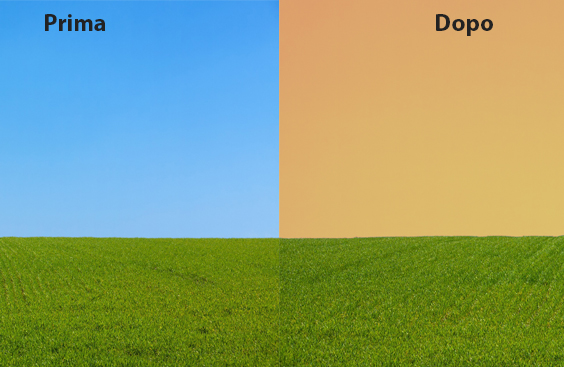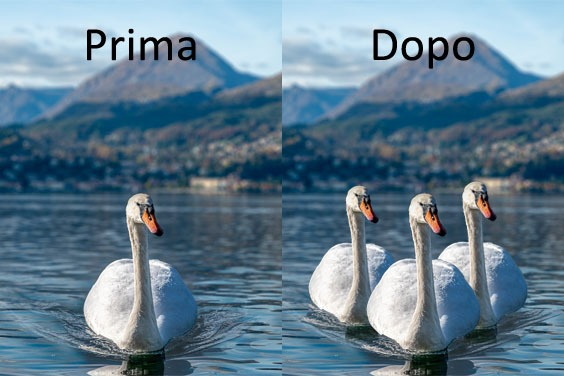S
Photoshop for Beginners: Complete Guide

Photoshop for Beginners is the topic that we, at Made, want to discuss with you today.
Adobe Photoshop, as you already know, is a high-level graphics processing software, used by professionals all over the world to create, edit and optimise digital images.
Its origin dates back to the processing
of black-and-white images and the editing of photographic negatives, but over the years, Photoshop has evolved into an extremely versatile tool used in a wide range of applications, including graphic design, digital photography and video post-production.
Its intuitive user interface and wide range of drawing and text tools make Photoshop one of the most popular and powerful graphic design tools on the market.
Let’s get right to the heart of this comprehensive mini-guide and see what basic features might be useful for a beginner:
Selection tools in Photoshop
Selection tools in Photoshop allow you to select a specific part of an image to edit it individually.
There are several selection tools to choose from, such as quick selection, selection by shape, selection by colour and magic selection.
Quick selection allows you to select a specific area of the image using a predefined shape, such as a rectangle or circle.
Shape selection lets you select a specific area of the image using a custom shape, such as a polygon or brush.
Selection by colour allows you to select all pixels of a specific colour in the image, while magic selection allows you to automatically select pixels of a similar area in the image.
Once you have selected an area, you can edit it using editing tools such as transform, copy or delete.
In addition, you can also use the painting tools to colour or paint only on the selection.
Selection tools in Photoshop allow you to select a specific part of an image to edit it individually.
There are several selection tools to choose from, such as quick selection, selection by shape, selection by colour and magic selection.
Example Selection tools
Let us imagine that we have an image of a landscape with a blue sky and a green meadow. If we want to change only the colour of the sky, we can use the selection by colour tool to select only the pixels of the sky.
Once the sky is selected, we can use the paint or adjustment tools to change the colour of the sky without affecting the rest of the image.
In this way, the selection tools allow us to work precisely and purposefully on specific areas of the image, changing them as we wish without affecting other parts of the image.
Painting Tools in Photoshop
Painting tools in Photoshop allow you to colour or paint over an image.
There are several painting tools to choose from, such as the paintbrush, brush, sponge brush and cloning brush.
Brush allows you to paint on the image using a specific texture and size.
The brush allows you to paint on the image using a specific texture and size, but with a brushing effect.
Sponge brush allows you to paint on the image using a specific texture and size, but with a colour-absorbing effect.
The cloning brush allows you to copy a specific area of the image and paint it on another area.
Painting tools are useful for colouring specific areas of the image, adding textures, creating light and shadow effects and correcting imperfections.
Example Painting Tools
Here is an example of how to use painting tools in Photoshop to create a colour effect on an image:
- Open the image you wish to edit in Photoshop.
- Select the Brush tool from the toolbar on the left.
- Choose a colour from the colour palette.
- Adjust the brush size using the toolbar at the top.
- Click and drag the brush over the image to paint.
- If you wish to change the shape of the brush, use the “Brush Shapes” option on the top toolbar to choose from several predefined shapes.
- Continue painting on the image until you are satisfied with the result.
- Use the editing tools to move or change the shape of the painted areas if necessary.
- Save the modified image using the export function.
This is just a basic example of how to use painting tools in Photoshop, but there are many other things you can do with these tools, such as creating custom textures or using dynamic brushes to create brushstroke effects.
Editing tools in Photoshop
Editing tools in Photoshop allow you to change the size, shape or position of an image or selection.
There are several editing tools to choose from, such as transform, copy and delete.
Transform allows you to change the size, shape and position of an image or selection. You can use transformation to enlarge or shrink an image, rotate or skew it, or distort it.
Copy allows you to duplicate an image or selection and place it in another position. This is useful for creating multiple compositions or duplicating an image element to enhance a detail.
Delete allows you to remove an image or selection from the image. This is useful for removing unwanted elements from the image, such as imperfections or noise elements.
In addition, the editing tools are useful for aligning and aligning images and creating overlay effects. Using these tools in combination with the selection and painting tools, it is possible to create complex and customised effects on an image.
Example Editing Tools
An example of using the editing tools in Photoshop would be to change the size of an image.
Using the transform tool, you can enlarge or shrink an image while maintaining the original proportions.

To enlarge an image, you can select the transformation tool and drag a corner of the image outwards.
To shrink an image, you can select the transformation tool and drag a corner of the image inwards.
In addition, you can also use the transformation tool to rotate an image.
To do so, you can select the image, click on the upper left corner of the image and drag in one direction or the other to rotate the image.
You can also use the editing tools to crop an image, using the crop tool, to remove unwanted parts of the image and to change the shape of the image using distortion.
These are just a few examples of how to use the editing tools in Photoshop, but there are many more options and combinations available to edit and enhance your images.
Using these tools in combination with the selection and painting tools, you can create complex and customised effects on an image.
Layers in Photoshop
Layers in Photoshop are like transparent sheets of paper overlaid on an image.
Each layer contains a specific part of the image, such as text, an image or a selection.
Using layers, you can organise and edit the various parts of the image independently of each other.
Layers allow you to create overlay effects, such as fade-in or fade-out, and adjust the transparency of a specific layer. They also allow you to create, delete, duplicate, move, combine, adjust transparency and group layers.
Photoshop Layers example
An example of using layers in Photoshop could be creating a flyer for an event.
You could use layers to separate the different elements of the flyer, such as text, images and logos.
Start by creating a new layer for the text of the flyer.
This way, you can write the text using Photoshop’s text tools, place it where you want it and easily change the font, size and colour of the text without affecting the other elements of the flyer.
Create another layer for the flyer images. This way, you can insert images, position them where you want and easily change the size and position of the images without affecting the text.
Create another layer for flyer logos. This way, you can insert logos, position them where you want and easily change the size and position of the logos without affecting the text and images.
In this way, using layers, you can create a professional flyer and easily change each element of the flyer without affecting the other elements. By using layers, you can create complex compositions and easily edit various parts of the image.
Filters in Photoshop
Filters in Photoshop allow you to apply special effects to images, such as blur, mosaic, sharpen and texture. There are filters to remove noise, to create distortion effects and many others. Just as you can use filters in combination to create customised effects.
Example Filters
An example of how to use filters in Photoshop could be to apply the ‘Mosaic’ filter to create a pixelated effect on an image.
To begin, open the image on which you want to apply the filter in Photoshop. Then select the image layer on which you want to apply the filter from the layer table.
Next, go to “Filter” in the top menu bar and select “Distort” > “Mosaic”.
This will open the ‘Mosaic’ filter window where you can adjust the pixel size and level of randomness.
Once you have adjusted the filter as desired, click “OK” to apply it to the selected image. You will see that the image is now pixelated and has a mosaic effect.
In addition, you can also change the transparency of the filter layer to obtain a more blurred or less obvious effect.
This is just one example of how to use filters in Photoshop, but there are many more to choose from and combine to create unique and customised effects on your image.
Adjustments in Photoshop
Adjustments are an important tool for changing the hue, contrast and saturation of an image.
Hue
Hue refers to the amount of light present in the image; an adjustment called ‘exposure’ can be used to change it.
With this adjustment, you can increase or decrease the amount of light present in the image, making it lighter or darker.
The Contrast
Contrast is the difference between the lightest and darkest areas of the image; to change this, you can use an adjustment called ‘contrast’.
With this adjustment, you can increase or decrease the difference between the lightest and darkest areas of the image, making it sharper or blurrier.
Saturation
Saturation refers to the intensity of colours; to change this, you can use an adjustment called ‘Saturation’.
With this adjustment, you can increase or decrease the intensity of the colours in the image, making them brighter or duller.

Example Adjustments in Photoshop
Suppose you want to enhance an image taken at sunset.
You could use the Hue/Saturation adjustment to increase the saturation of the warm colours of the sunset, such as red and orange, to make them brighter and more vivid.
You could also use the brightness/contrast adjustment to increase the brightness of the image to highlight details in the sky and landscape.
In addition, you could use the colour adjustment to correct any colour problems in the image, such as a dominant colour or an image that is too yellow or too blue.
In general, it is important to use these adjustments gently to avoid overloading the image with too much light, too much contrast or too much saturation.
We recommend experimenting with these adjustments to find the right balance for each specific image.
Text Tools in Photoshop
The text tools in Photoshop allow you to add text to your images easily and effectively. There are several options to choose from, such as normal text, shaped text and 3D text.
Example Text Tools in Photoshop
If you wanted to add plain text, select the ‘Text’ tool from the toolbar and click on the image where you want to insert the text. Once clicked, you can type the desired text and change the size, colour and font using the options on the property bar.
Shaped text, on the other hand, allows you to create text in custom shapes, such as a circle or spiral shape. To use this option, select the Shaped Text tool from the toolbar and draw the desired shape on the image. Once the shape is created, you can type in the desired text and change options such as size and colour.
Finally, 3D text allows you to create text with three-dimensional effects, such as depth and light. To use this option, select the ‘3D Text’ tool from the toolbar and click on the image where you want to insert the text. Once clicked, you can type in the desired text and use the options on the property bar to modify the 3D effect.
The text tools in Photoshop are useful for creating titles, captions and labels for your images, as well as for creating promotional graphics and design projects. With these tools, you can easily create eye-catching, customised text for your images.
Export to Photoshop
Exporting in Photoshop means saving an image in a specific format for use in other programmes or for sharing with others. Photoshop supports a wide range of file formats, including JPEG, PNG and many others.
JPEG format is a popular file format for images, as it uses compression that reduces file size without compromising image quality too much.
The PNG format is a file format that supports transparency and is commonly used for images with transparent backgrounds or for icons.
To export an image in Photoshop, you must follow these steps:
- Open the image you want to export in Photoshop.
- Go to File>Export>Export As.
- Choose the file format in which you wish to export the image, e.g. JPEG or PNG.
- Select the destination folder where you want to save the exported image.
- Change any export settings, such as resolution or image quality.
- Click on ‘Export’ or ‘Save As’ to save the exported image in the selected destination folder.
In addition, you can also use the ‘Export for Sharing’ function to optimise export settings for specific social networks or devices, such as Instagram or mobile devices.
Exporting in Photoshop allows you to use images created in other programmes or share them with others.
Be sure to choose the appropriate file format for your needs and adjust the export settings for the best possible image quality.
Conclusion
In conclusion, Photoshop is a powerful and versatile graphics processing software that offers a wide range of features for editing and enhancing images. The selection, painting, editing, layer, filter and text tools are just some of the options available for beginners, but there are many other advanced features that can be discovered and used to create stunning images. With a little practice and exploration, anyone can learn to use Photoshop like a pro.
At Made, we are ready to provide you with the tools you need to train you, your co-workers and even your family members to ensure maximum preparedness for everyone.

